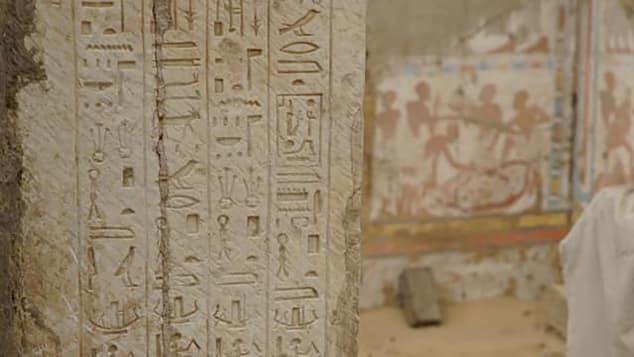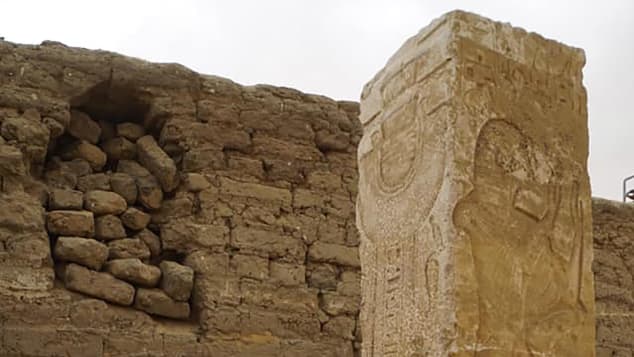Archaeologists have unearthed the tomb of Ptah-M-Wia, who was head of the treasury under Egyptian pharaoh Ramses II. A team from Cairo University discovered the tomb while excavating the ancient burial ground of Saqqara, 20 miles south of Cairo. The famous Step Pyramid, which is thought to be the oldest pyramid in the world, is one of the various monuments situated on the popular Saqqara necropolis, where numerous significant archaeological finds have been found in recent years.
Some 3000 years ago, Ramses II, also known as the Great, was the king of the 19th dynasty (1292–1190 BCE) of ancient Egypt. His reign was the second-longest in Egyptian history, between 1279–13 BCE. Ptah-M-Wia was the chief treasurer to Ramses II. He “served as royal scribe and supervisor of cattle, and presided over sacrifices at the Ramses II temple in Thebes,” according to Smithsonian Magazine.
The team did not only find the tomb of the treasurer but also uncovered the tombs of other dignitaries, including a military leader.
“The site of discovery includes the tombs of senior modern statesmen from the era of the 19th Dynasty and complements the site of the tombs of the 18th Dynasty, the most important of which is the site of the military leader Horemheb,” Mostafa Waziri, secretary-general of Egypt’s Supreme Council of Antiquities, said in a statement cited by the Egypt Independent.

The Egyptian Ministry of Tourism and Antiquities unveiled the tomb of Ptah-M-Wia, with its richly decorated walls, on Saturday. Ola El Aguizy, who led the project, said that the tomb does not only include walls carved with hieroglyphics but also comes with a shrine and a yard. Images of a calf being carried to slaughter are found on the walls. The team of archaeologists said it also found stone blocks scattered around the tomb. These stones probably supported a ceiling that may have since fallen in, the team said.
The archaeologists also found Osirian columns, which were sculpted in the shape of Osiris, god of death and resurrection. The columns were common during the rule of Ramses.
“All these pieces will be studied to be put back in their original places inside the tomb,” El Aguizy said as work on the site continues.

Since 1850, archaeologists have been studying the Saqqara necropolis, where 13 mummies believed to be over 2,500 years old were found in September last year. Archaeologists unearthed the said coffins, which were arranged on top of each other, in a 40-feet (12 meters) deep well in the ancient burial ground of Saqqara.
The country in 2019 also displayed a huge cache of wooden and bronze statues including animal mummies found in the same necropolis. The discoveries, which included mummified cats, crocodiles, cobras, and birds, were unveiled for the first time near the capital Cairo. The Antiquities Ministry announced the find at the foot of the Bastet Temple, dedicated to the worship of cats among ancient Egyptians, Aljazeera reported.
Egypt, which generates a significant portion of its annual revenue through tourism, recently reopened its archaeological sites and museums to tourists after several months of closure as a result of the COVID-19 pandemic, CNN reported. The country received over 13 million visitors in 2019 and hit a record $13 billion in revenue.










